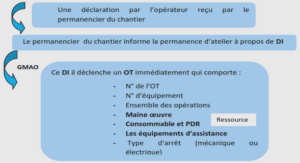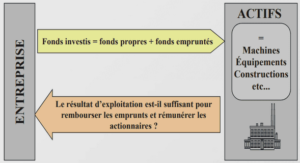USING THE BRITISH COUNCIL ‘Learn English Teens’ AUDIO MATERIALS
Skills to successful listening comprehension
There are many categorizations proposed by different researchers like MUNBY (1978) (RIXON 1981) to cope with listening comprehension: Recognizing how intonation is used: – For structuring discourse – For underlining important information. Guessing/deducing meaning for use of contextual clues Recognizing makers for: – Introducing an idea – Transition to another idea – Concluding an idea. Identifying the main point by: – Vocal underlining (decreased speed, increased volume) – Verbal cues (the point I want to make is…). Selective instruction of points involving: – Coordination of related information – Rearranging contrasted items – Tabulation of information for comparison and contrast. These cover the general and the most important listening skill which constitute the components of listening comprehension in foreign language study. Anyone approaching a listening task in the real world consciously or unconsciously uses one of these skills cited above which are generally pointed out as selecting, predicting, and inference skills. 1.1.2.1. The selecting skill To have an effective listening, the selecting skill is necessary. First of all, a listener needs to listen selectively because he cannot pay attention to and understand everything he hears. Then, he selects only the important information he needs according to the purpose of his task. That is he filters out information which is relevant and rejects the rest unnecessary. For instance, when listening to a weather forecast, if our purpose is to decide 7 whether to wear a coat or not, we want to focus on the temperature. Successful selection also depends on the listener’s knowledge of the language; in other words, his familiarity with the language elements (grammar, lexis, pronunciation, expressions of contrast, comparison, cause, and effects) and with the signals (sounds, stress, rhythm, intonation, and discourse makers like “first”, second) helps him make a good selection. Recognizing theses cues enhances the listener’s ability to indicate when it is necessary to listen attentively and when it is safe to ignore what is being said. Therefore, to be a good listener, one must be able to select effectively as UR (1991) states: “a listener’s comprehension depends on his/her selection”.
The predicting skill
The predicting skill increases chances for successful listening as the listener listens by guessing what will come next. Subsequently, prediction involves the activation of the prior knowledge which generalized the mental representations of our experience that are available to help us understand or to cope with new experiences like in terms of listening situations: first, a listener build an idea in his mind to complete the speaker’s utterance even before the speaker get the words out; then, he tries to “match” his prediction with what he actually hears. As a matter of fact, prediction is helped by extra-linguistic elements (contextual and situational clues). For example, (TOMALIN 1986): “It’s getting late. I’d better…” On hearing just the first part of the sentence, we automatically start to use our bank of knowledge to think about and to predict what the rest of the sentence might be. The listener may predict that “go home now” or “leave” will be the end of the utterance. Even though prediction is not always exact, we would understand anyway if the speaker says: “find myself a hotel”. Prediction is also helped by linguistic elements (intonation, stress, grammar, vocabulary) clues. TOMALIN (1986) cites that the students can use voice, scene, expressions, and gesture as a clue to what will happen next or what will be said. For instance, the word “but” leads us to think of contrast; the word “so” leads us to think of result. “Effective… listeners predict what they are going to hear” (HARMER: 1991) (cited in HOWELL).
The inference skill
According to All Nations English Dictionary (1992), “to infer” means “to reach a conclusion or decision from something”. Through this definition, the inference skill is the listener’s capacity to come out with the interpretation of what he sees or hears from his logical reasoning. Because of that, the inference skill is a complex skill as VANDERGRIFT (2002) states: “Listening is an invisible mental process, making it difficult to describe.” However, this skill enables the listener to interpret logically due to verbal and non-verbal clues such us the speaker’s intonation, stress, gestures, facial expressions, and words. For instance, the context helps the listener deduce what is not said but explicitly implied: “His car struck a tree. You can still see the mark on the tree.” Thanks to the context, it is implied in “‘His car struck a tree’ as ‘striking a tree’ necessarily implies, for a car, ‘the presence of a mark’ left on that tree” (MANORO 2005). In fact, the inference skill can be considered as “listening between the lines”; hence, the listener can make judgments. Nevertheless, interpretation may encounter failure which leads to misunderstanding. Besides, every people have their interpretation of what they see and hear because of culture, vocabulary, and knowledge as “words have different meanings to different people in different regions” (CUMMINGS 1992). The inference skill is subjective, but to have an effective listening it is necessary. “Effective listening depends on interpreting and deciphering what is said. Choice of words, use of idioms, and use of appropriate questions enhance our understanding of the message.” (ibid.).
Nature of listening
BROUGHTON et al. (1978) states that at first sight it appears that listening is a passive skill. This is not really true, since the decoding of a message (i.e. listening) calls for active participation in the communication between the participants. That is, the listener and the speaker are involved together to check that a statement has been correctly heard and understand. As regards active participation, listening consists in following practical and consecutive steps. It is first worth making a clear distinction between “listening” and “hearing” as they are components of listening process.
Hearing versus listening
Many people think that hearing and listening are the same. This concept is totally misleading. Considering the following definition gives us a clear idea about the difference between them. According to the Longman Concise English Dictionary (1985) “to hear” means “to perceive (sound) with the ear whereas “to listen” is “to pay attention to sound or to music”. For CUMMINGS (1992): “Hearing is the physical act of receiving sound”, but “listening is the process of attending to and attempting to understand what is said”. Thus, we can draw an obvious distinction between hearing and listening. On the one hand, “Hearing is simply the recognition of sounds”. In other words, the listener does not pay attention to what come to his ears, and which make him say: “I’m sorry; I didn’t hear exactly what you said” (RIXON 1986). On the other hand, “Listening implies some conscious attention to the message of what is said”, that is, the listener makes an effort and builds up sense from what he attends, and that requires the listener ask a question like “Are you listening to me?” (ibid.) BUCK (2001) states: “different learners often have different motives for listening, due to different interests and different needs”. Furthermore, in real life people give ear to only what they think more interesting and more relevant, say, “you are in a restaurant, you can hear other people talking around you but instead you choose to concentrate on the conversation you are having with a companion”. In fact, listening in real life is a clear instance of differentiating hearing and listening. As proposed by DOFF (1988), there are two ways of listening in real life: casual listening and focused listening. He states that in casual listening, we sometimes listen with no particular purpose in mind, and often without much concentration. Therefore, it is in this case that we have in mind the process of hearing in which we usually do not listen closely. An example of this kind of listening is: “listening to the radio while doing housework”. About focused listening, he asserts that we listen for a particular purpose, to find out information we need to know. It is the time when we relate the process of listening in which we listen more closely with concentration. An example of this kind of listening is: “listening to someone explaining how to operate a machine”. People do not pay attention closely, unless they hear something that particularly interests them. 10 Hearing and listening are small units that must be taken into account in understanding a listening passage; therefore, they are not enough. There still exist some units that make the listening process complete
Listening process
A number of scholars have characterized various ways of listening process like the one presented by BUCK (2001) – a model of memory that work in listening process: (i) Echoic memory, where the sounds are held briefly, (ii) Working memory, where the input is held for a few seconds while most of the processing takes place, (iii) Long-term memory, where things are stored for a much longer duration. This model of memory is commonly applied when exposing to real-life listening in which it is described in three interdependent stages. The perception stage It is in this first stage that a listener holds the sounds, which he has perceived, in the memory where incoming information is held very briefly: “the echoic memory”. These acoustic signals represent the meaningful sounds of the language which are put together to make up meaningful units. Evidently, the listener cannot retain all what he has heard; thus, he constructs a mental model (images) of the incoming information. However, affective factors like interest and motivation may have an impact on the acoustic input. Acoustic inputs do not make the listening comprehension successful unless the “echoic memory” passes them to the next stage. The apprehension stage In this second stage, the incoming information is processed in “working memory”, where input is held for a few seconds while most of the processing takes place. The listener’s knowledge of the language and his general knowledge are required because at this point the input is compared to other existing information. Thus, the listener extract the main meaning, the gist, of the message by retaining what is relevant and rejecting the rest. This selection is necessary as the memory cannot store a large number of information, especially this stage can remember something for a limited time only. The input is 11 executively processed at this stage by either controlled processes or automatic processes. Hence, the result of this process passes through the last stage. The retention stage In this last stage, the listener stores the main message in the “long-term memory”, where information is retained for a long time. To facilitate remembrance, the information is transformed in reduced form so that we will not have difficulties when reprocessing and recycling the idea if a situation make us recall information from the “long-term memory”. However, we almost never get the same words. We obtain a kind of restatement in a different way as we only memorize the gist of what has been heard. Listening process helps the listeners cope with listening in real life. As there is a variety of listening situations, listeners also have their goals in mind why they listen.
Listening purposes RICHARDS (1983) asserts
“listening purposes vary according to whether learners are involved in listening as a component of social action (e.g. conversational listening), listening for information, academic listening (e.g. lectures), listening for pleasure (e.g. radio, movies, television)” (cited in BUCK 2001). These three suggestions generally cover the listening purposes.
Transactional purposes
The purpose of the listener here is to communicate information. That is, exchanging information or using language to get things done. The listener also has to pay a great attention as his purpose is to get information without any immediate interaction. As a result, it is important that the message be understood, and the listener gets it right (BUCK 2001) in order to have a control on what is attended. Examples of transactional listening are a teacher giving a homework task, a customer making a complaint, a doctor giving instructions to a patient. Listening with transactional purposes is then listening in a one way method: speaker → listener.
Interactional purposes
This kind of purposes requires the listener to maintain social relationships. In other words, the listener needs to interact by giving verbal or non-verbal response while listening to the speaker. This particularly happens in a real life communication. What is important is not the content of what is said, but the fact that something is said in order to give interaction. Generally the participants do all they can to make their conversation agreeable to each other – they share feelings and opinions. CUMMINGS (1992) states: “In conversation, listening becomes more important. Not only does the listener have to understand and follow the speaker, he or she also has to provide feedback to the speaker and to ask questions to clarify information and encourage communication”. Interactional listening is establishing and maintaining contact with both speaker and listener in which they listen in a reciprocal way: speaker ↔ listener.
0. INTRODUCTIONQ |





